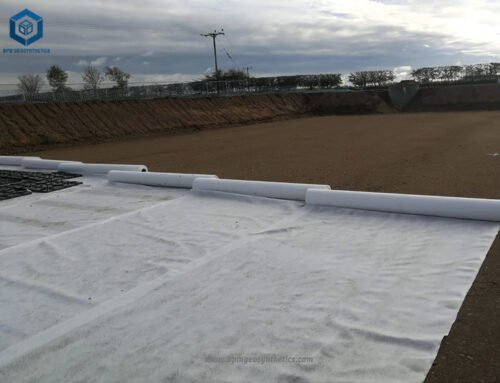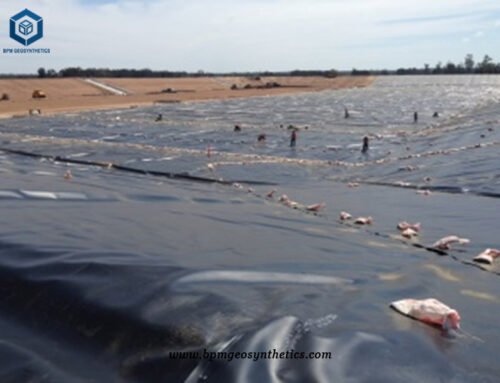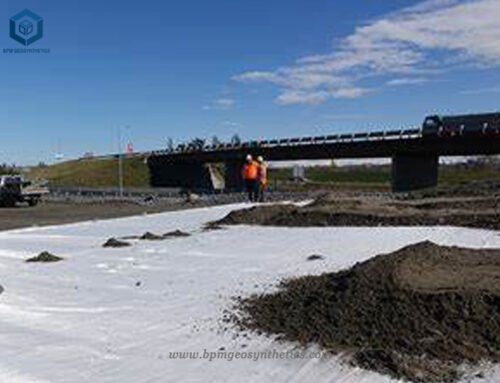Non woven polypropylene fabric is a material directly made of polyester through spinning and needle consolidation, with excellent heat and light resistance.
Non-woven polypropylene fabric is indeed a versatile material with a wide range of applications. It is a thermoplastic polymer, specifically polypropylene (PP), that is manufactured to have a non-woven appearance and structure. The unique characteristics of non-woven polypropylene fabric make it suitable for various uses.
One of the main applications of non-woven polypropylene fabric is in the production of non-woven bags. These bags are popular alternatives to single-use plastic bags due to their durability, lightweight nature, and eco-friendly properties.
Polyester long fiber nonwoven geotextile has excellent heat and light resistance. Even if it is exposed to the environment of nearly 20℃ for a short time, its performance has hardly changed. Through a large number of tests and practices, it has been proved that polyester long-fiber non-woven geotextile has long-term corrosion resistance to various natural soils, moisture and microorganisms.
1. What Is Non Woven Polypropylene Fabric?
Non-woven polypropylene fabric is a synthetic fabric that is produced using polypropylene polymers. It stands apart from traditional woven fabrics like cotton or wool because it is created through processes such as mechanical bonding, heat bonding, or chemical bonding, rather than weaving.
The manufacturing of non-woven PP involves spinning polypropylene polymers with the help of heat and air, resulting in long, fluffy threads that resemble cotton candy. These threads are then pressed together between hot rollers, forming a flexible yet solid fabric with a texture reminiscent of woven canvas.
Non-woven PP fabric offers numerous advantages. It is lightweight, durable, and resistant to moisture, making it well-suited for various applications. This fabric is commonly employed in the production of bags, medical masks, disposable garments, geotextiles, and other products that require strength, flexibility, and cost-effectiveness.
Non-woven polypropylene fabric provides a versatile alternative to traditional woven fabrics. It exhibits unique characteristics and finds wide-ranging applications across different industries, thanks to its durability, lightweight nature, and resistance to moisture.
2. What Are Benifits of Non Woven Polypropylene Fabric?
Non-woven polypropylene offers several benefits in various applications. Some of the advantages include:
- Eco-friendly: Non-woven polypropylene is 100% recyclable, contributing to a more sustainable environment. It is also biodegradable and can burn without releasing toxic contaminants.
- Environmentally conscious manufacturing: The production process of non-woven polypropylene does not involve PVC coating or the use of water, reducing the environmental impact.
- Durability: Non-woven polypropylene bags are more durable compared to traditional plastic bags, making them highly reusable. This durability extends the lifespan of the bags and reduces the need for single-use alternatives.
- Customizable printing: Non-woven polypropylene can be easily printed on using screen printing or heat transfer full-color printing techniques. This allows for customized designs and branding opportunities.
- Strength and reinforcement: Non-woven polypropylene can be used to reinforce retaining walls, strengthen weak roads, fix road cracks, and improve slope stability. It helps prevent water and soil loss and protects against soil freezing damage.
- Filtration and drainage: Non-woven polypropylene serves as a filtration layer in drainage pipes or gravel, helping to separate fine particles and facilitate water drainage.
The non woven polypropylene fabric roll shall be protected from damage before installation and deployment. The geotextile roll shall be stacked in a flat place without water accumulation, and the pile height shall not exceed the height of four rolls, and the identification sheet of the roll can be seen. Geotextile roll must be covered with opaque material to prevent ultraviolet aging. During storage, the label and data shall be kept intact.
During the transportation (including the transportation from the material storage site to the work site), the geotextile roll must be protected from damage.
Geotextile rolls that have been physically damaged must be repaired. Geotextiles that are severely worn cannot be used. Any geotextile in contact with leaked chemical reagent is not allowed to be used in this project.
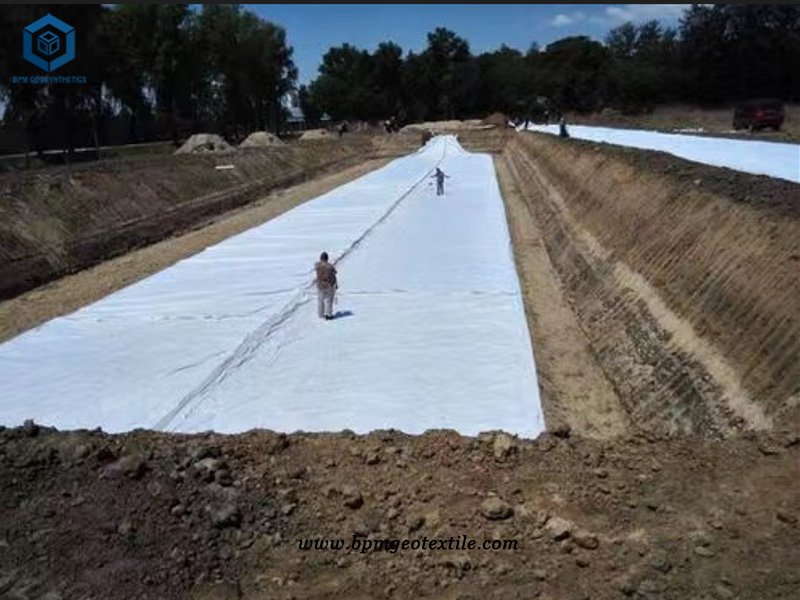
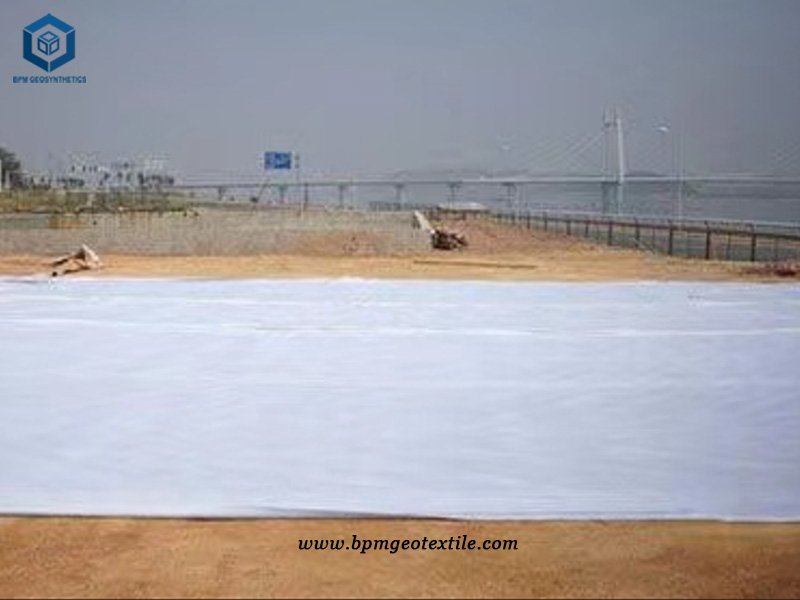
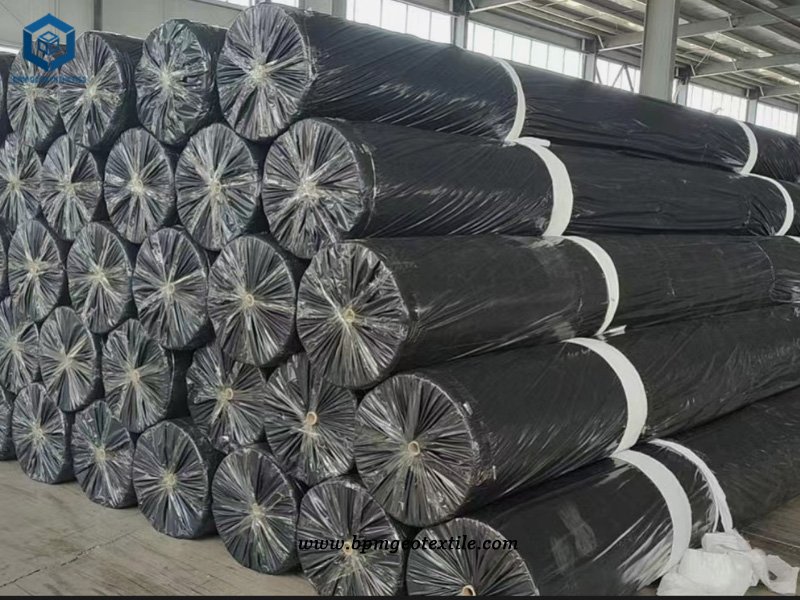
3. Non Woven Polypropylene Fabric Peru Application for Road Construction
The customer from Peru successfully secured a road construction project and needed high tensile geotextile for the job. They shared the index of the required non-woven polypropylene fabric with us, and upon checking, we found it to be consistent with our 500g polyester filament geotextile. We promptly provided the customer with the price and index information. After comparing it with their technical requirements, the customer’s personnel confirmed that our geotextile met their specifications.
To further validate the quality, the customer requested a sample, which we promptly sent on the same day. After a few days, the customer received the sample and conducted thorough testing, confirming that it met the required standards. Following subsequent communication and negotiation, the customer placed an order for three 40HQ geotextiles, indicating their satisfaction with our product.
This successful collaboration demonstrates our ability to meet specific project needs with our high-quality non-woven polypropylene fabric. We are committed to providing reliable solutions for road construction projects and look forward to delivering exceptional products and services to our customers.
3.1 Specification of Non Woven Polypropylene Fabric for Road Construction in Peru
Specification of Non-Woven Polypropylene Fabric for Road Construction in Peru:
- Total Non-woven Polyester Filament Geotextile: 60,000 square meters
- Weight: 500g
- Roll Size: 5.95 meters wide by 50 meters long
These specifications indicate that the non-woven polypropylene fabric for the road construction project in Peru requires a total area coverage of 60,000 square meters. The fabric has a weight of 500g per square meter, providing the desired strength and durability. Each roll of the fabric measures 5.95 meters in width and has a length of 50 meters, making it convenient for transportation and installation at the construction site.
These specifications reflect the necessary quantity, weight, and dimensions of the non-woven polypropylene fabric required for the road construction project, ensuring its suitability for the intended application.
4. Laying Method of Non Woven Geotextile Fabric
The laying method of non-woven geotextile fabric involves several techniques for proper installation. Here are the recommended methods:
4.1 Manual Roll and Pave
The fabric should be rolled out and laid manually. It is crucial to ensure a flat and even surface, allowing for appropriate deformation allowance.
4.2 Overlapping, Sewing, and Welding
For both long wire and short wire geotextiles, various methods can be employed. Overlapping, sewing, and welding are commonly used techniques. The stitching or welding width is typically more than 0.1m, and the lap width should be more than 0.2m. When geotextiles are expected to be exposed for an extended period, welding or stitching is necessary.
4.3 Stitching of Geotextile
All stitching must be continuous, and point stitching is not permitted. Before overlapping, there should be a minimum overlap of 150mm between geotextiles. The sewing needle should be at least 25mm away from the fabric’s edge (the exposed edge).
The most common method for sewn geotextile joints is the thread locking chain joint. The thread used for stitching should be made of resin material with a minimum tension of more than 60N. It should also possess chemical corrosion resistance and ultraviolet resistance equivalent to or exceeding that of the geotextile.
Any “missing stitches” on the sewn geotextile must be re-stitched at the affected area.
Appropriate measures must be taken to prevent soil, particulate matter, or foreign objects from entering the geotextile layer after installation.
The choice of natural lap, seam, or welding for cloth overlap should be based on the terrain and intended use of the geotextile.
By following these laying methods, non-woven geotextile fabric can be installed effectively to provide the desired functionality and performance in various applications.
About BPM
BPM has been specializing in delivering one stop geosynthetics products and solutions to worldwide customers since its foundation in 2007. BPM had provided many types of effective and state of the art geomembranes, geotextiles, geocells, geosynthetic clay liners (GCLs), drainage boards, geogrids to over 81 countries. ia,
BPM is not only manufacturing best quality geosynthetic products but also providing professional design and installation service. OEM, ODM, custom development and fabrication are also available. If you have any questions or inquiries, please contact us, we will reply as soon as possible.


